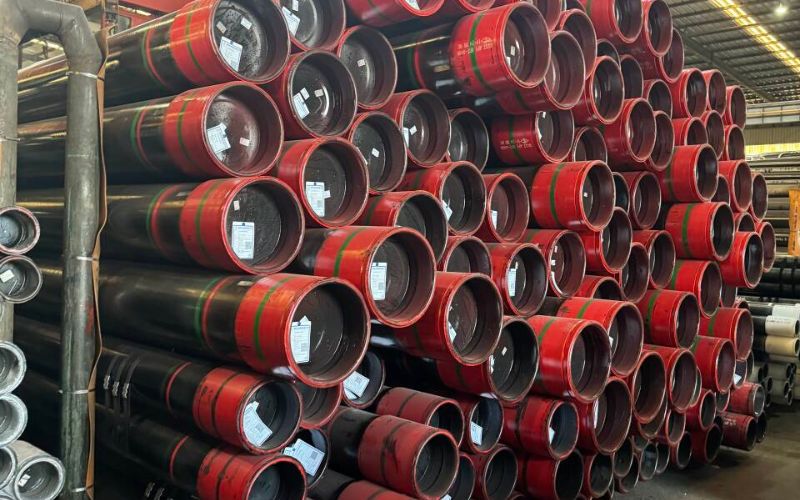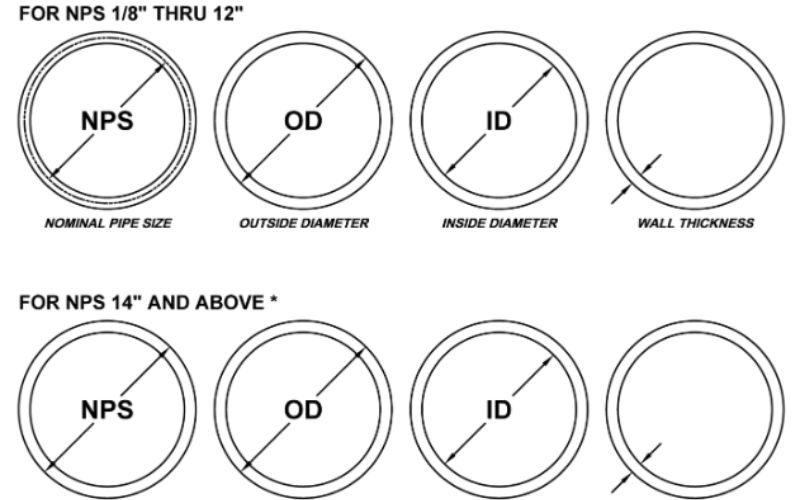Steel flat bars have emerged as a multipurpose and essential material for various applications in construction, fabrication, or DIY projects. The hot rolled mild steel flat bars are the best option for professionals and hobbyists because of their strength, flexibility, and affordability. This article explores all the essential aspects of steel flat bars, including their main characteristics, advantages, and the sectors where they are most frequently used. Toward the conclusion, you will be able to comprehend why steel flat bars are indispensable for different projects and which type to pick according to your requirements.
Understanding Mild Steel Flat Bars
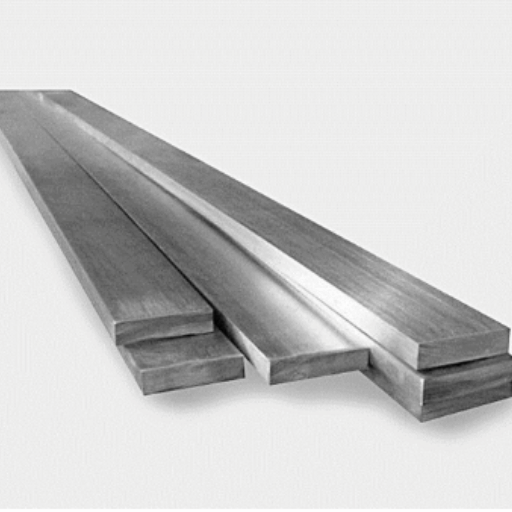
Mild steel flat bars are amazing materials and can be applied for many things; their shape is rectangular, and the steel’s strength, durability, and ease of fabrication, are some of its properties. The production is made with low-carbon steel, which is why they can be cut, welded, and shaped easily compared to high-carbon alternatives. The use in construction, manufacturing, and repair projects is due to the low price and good quality. The most important applications are structural supports, brackets, frames, and reinforcements. Their availability in various forms makes them suitable for both industrial and DIY projects, which means that they can meet a wide range of needs efficiently.
What are Mild Steel Flat Bars?
Mild steel flat bars possess many advantages, such as being versatile and long-lasting metal materials, with superb working properties and efficiency in terms of cost. Flat bars are rectangular, low-carbon steel bars that can be easily cut, welded, and formed for different project needs. These bars are mainly used in construction, infrastructure, and manufacturing industries where they need to be reliable and adaptable. Some of their major applications include building structural supports, making frames, brackets, and reinforcing in construction. Moreover, their low price and easy availability have made them a choice for small-scale DIY projects.
Industry Insight: Interest in mild steel flat bars has been increasing as they are considered an essential part of sustainable construction and custom manufacturing solutions. This trend points to their versatility and compatibility with the industry’s requirement for materials that are scalable and eco-friendly. Their easy availability and low maintenance requirements have always made them the first choice for both professionals and amateurs.
Key Characteristics of Mild Steel Flat Bars
Mild steel flat bars have a long lifespan, they are versatile and are priced very low so that they can be used in different sectors both industrial and home. The following are the main attributes that make the product popular:
1. High Tensile Strength
The tensile strength of mild steel flat bars is remarkable and they can withstand a considerable amount of force or stress without cracking. This feature is the reason why they are used in building construction and suppling to factories heavy machinery parts as well.
2. Flexibility and Workability
Mild steel is superbly plastic and it offers flat bars that can be cut, welded, and formed into the desired shapes very smoothly. They can be applied in making anything from furniture design to precision tools which are used in custom fabrication projects.
3. Corrosion Resistance (with Coating)
Mild steel is sensitive to oxidization and among the treatments given to it, galvanizing and powder coating are the mostly applied ones to protect it in moist environments. Research says that the life span of coated mild steel can reach up to 25 years depending on how well it is maintained and also location.
4. Sustainability
Mild steel flat bars are completely recyclable thus their use contributes to the green building movement and also minimizes the waste produced through the steel industry. According to research, the steel recycling rate in the world is over 70%, which makes mild steel a very responsible material for environmentally sustainable practices.
5. Cost-Effectiveness
Mild steel flat bars cost significantly lesser than, for example, stainless steel, or aluminum, and still, the performance is not affected in generic applications. The data that comes from the industry reports reveal that mild steel costs can be as low as 20-30% cheaper than stainless steel while offering the same functionality in non-corrosive conditions.
6. Load-Bearing Capacity
Mild steel flat bars exhibit a considerable load-bearing capacity which explains why their presence in engineering design, beams, and other structures that provide support to the weight is so common.
7. Dimensional Accuracy
The use of modern techniques allows the production of mild steel flat bars with very stringent tolerances thus enabling the application of these bars in situations where accuracy is required, like in the case of machine parts and brackets.
8. Wide Range of Sizes
Mild steel flat bars come in a variety of sizes, normally from 3mm to 25mm in thickness and 20mm to 200mm in width. The different options available are able to meet the specific project requirements efficiently.
Conclusion: Mild steel flat bars are a perfect answer for industries looking for strong, adjustable, and inexpensive materials. Their use is also backed by their good compatibility with earth-friendly manufacturing, great physical properties, and versatility. No matter if it is for building, machine making, or hobby projects, mild steel flat bars will still be the first choice among various materials for different uses.
Applications of Mild Steel Flat Bars
- ✓ Construction frameworks and structural support
- ✓ Production of machine parts and components
- ✓ Making of gates, grills, and railings
- ✓ Automotive applications, like brackets and reinforcements
- ✓ Production of storage racks and shelving units
- ✓ Do-it-yourself and craft projects for custom designs
- ✓ Shipbuilding and repair work
- ✓ Electric industries for cable trays and grounding systems
- ✓ Farm tools and equipment
- ✓ Furniture manufacturing for frames and supports
Types of Steel Flat Bars
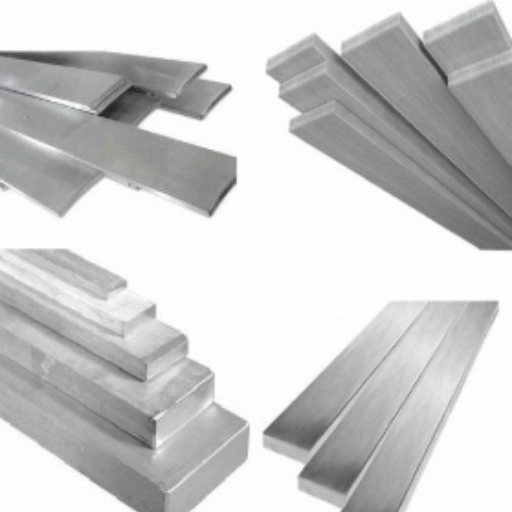
1. Mild Steel Flat Bars
Mild steel flat bars are the material that is mostly used in construction, manufacturing, and general fabrication because of their low cost and versatility. They are easy to work with, which is why both industries and DIYers use them.
2. Stainless Steel Flat Bars
Stainless steel flat bars have a very high resistance to rust and corrosion, which makes them suitable for areas that are moist or chemically treated. Their major fields of usage are marine, food, and medical industries.
3. High Carbon Steel Flat Bars
This type of flat bar is made from high carbon steel which is a stronger and harder type of steel; thus, it offers greater resistance to wear and longer life. Heavy-duty machine and equipment manufacturing is the main field that uses this material.
4. Alloy Steel Flat Bars
These bars are made of alloy steel with additional elements which are usually chrome or nickel for the purpose of improving strength, toughness, or heat resistance. They are very common in the automotive and aerospace industries where specialized applications exist.
5. Galvanized Steel Flat Bars
The zinc coating that is applied to galvanized steel flat bars acts as a barrier that prevents corrosion and thus the bars offer good resistance to it. Their use is usual in outdoor structures, fences, and general construction work.
Hot Rolled Steel Flat Bars
Hot rolled steel flat bars are formed by first heating the metal to a temperature that is more than its recrystallization temperature and then rolling it into a flat shape. The process turns the steel into a much more ductile and workable material which, then, can be formed into different sizes and thicknesses. Hot rolled steel flat bars are strong, however, one of the characteristics that play a major role in their use is the strength- they are widely used in many sectors due to their strength, affordability, and versatility.
📊 Market Insight: In the building, construction, and manufacture sectors, hot rolled steel flat bars are the main material for creating frames, supports, and other components, to mention some. Global demand for hot rolled steel is consistently growing according to the industrial data published recently, primarily due to the global infrastructure investment and the users switching to advanced industrial machines. The hot rolled steel market is anticipated to grow at a compound annual growth rate (CAGR) of 4% in the period from 2023 to 2028, reflecting the continuous adoption of its unique features.
Generally, hot rolled steel flat bars are more rough in surface finish than cold-rolled steel, and also there may be minor differences in shape caused by the cooling process. Such bars, however, do very well in places where monotony of precision is not such an important factor. It is not uncommon for buyers to go for hot rolled steel just for its low price and long life with no loss in quality. Popular grades of hot rolled steel are A36 and A1011, which can tolerate high levels of mechanical performance under standard conditions.
Cold Rolled Steel Flat Bars
Cold-rolled flat steel bars are a great choice for those applications requiring better tolerances, finer finishes, and stronger mechanical properties than those supplied by hot rolled steel. The cold rolling method consists of rolling the steel at ambient temperature, thus reducing its volume causing its strength and surface quality to be better. This process guarantees better dimensional precision and very smooth surface, thus cold rolled before flat bars the steel is perfectly suitable for precision machining, structural parts or very delicate manufacturing processes.
💡 Key Advantage: Increased tensile strength and hardness are some of the characteristics that distinguish cold rolled steel from other types of steel. Research indicates that cold rolling can result in a 20% increase in tensile strength, which means that it can be used in challenging applications and at the same time enjoy the advantageous characteristic of being thinner. The common grades 1018 and 1045 are frequently selected for their broad application and high machinability, with 1018 grade being particularly popular for its good fusion potential and strength balance.
Currently, cold rolled steel flat bars are extensively utilized in automotive, construction, and manufacturing industries, among others. For example, they are mainly used for the production of cutting-edge parts such as shafts and brackets in the automobile industry. Moreover, architectural applications that require both aesthetic appeal and tight tolerances benefit from the bars’ superior surface finish and hardness. Cold rolled steel flat bars are a dependable and sturdy material that is able to serve diverse industries whether it be small projects or huge factories.
Comparison of Hot Rolled and Cold Rolled Steel Flats
When we talk about hot rolled and cold rolled steel flats, it is necessary to know for sure the processes of production and the resultant physical and chemical properties. The steel is hot rolled into flats by subjecting it to extremely high temperatures, usually above the recrystallization temperature, which makes it more malleable and easier to shape. On the other hand, cold rolled steel flats are mechanically processed through annealing and rolling at temperatures below the recrystallization point, which results in a smoother surface, tighter tolerances, and increased strength.
Key Differences in Features and Properties
| Feature | Hot Rolled Steel Flats | Cold Rolled Steel Flats |
|---|---|---|
| Surface Finish | The surface quality is generally bad and scaled because of the process at high temperatures. In some cases, it is necessary to descale or to do finishing to meet the requirements of applications that demand smoothness. | The flats come with a shiny and polished well-cut finish that is perfect for the applications requiring beauty or accuracy in measurement. |
| Dimensional Precision | Dimensions are allowed to vary more than usual because of thermal expansion and shrinkage that occur during the cooling process. | The method used in manufacturing guarantees narrower tolerances, giving better consistency among the batches. |
| Strength and Hardness | Their ductility is higher, thus they are easier to work with if there is a need for bending or reshaping; however, their strength and hardness are lower than those of cold rolled steel flats. | They consist of high yield strength and hardness that result from work-hardening during processing; hence, they are the most powerful mechanically. |
| Cost Efficiency | These are the most suitable for big industrial applications where utmost precision is not a requirement due to their lower production cost. | The cost might be justified by the very high quality and precision, especially in case of specific applications, though additional processing increases the price significantly. |
Analytical Data and Application Insights
Surface Roughness
Recent research indicates that hot rolled steel has a surface roughness average (Ra) of 3.6-12.5 micrometers, while cold rolled steel is much smoother with an Ra of 0.8-2 micrometers. This significant difference makes cold rolled steel the perfect choice for fine aesthetic or high-precision machine parts.
Mechanical Strength
Cold rolled steel flats can attain a tensile strength that is 20% higher than that of hot rolled steel, thus guaranteeing their suitability for use in structural or load-bearing applications.
Industries in Focus
• Hot rolled steel is the material of choice for building structures, bridges, and making industrial machines because of its low price and multiple uses.
• Cold rolled steel is considered the best for the automotive industry, top-notch machinery, and consumer goods, where surface quality and dimensional precision are the most important factors.
🎯 Choosing the Right Option
In the end, the choice between hot rolled and cold rolled steel flats comes down to the particular application requirements. Hot rolled flats are the better option if cost effectiveness and formability are the main concerns. Cold rolled steel flats are the higher-value solution for projects that emphasize aesthetics, tighter tolerances, or increased strength. Considering these differences in light of project requirements, it is possible for manufacturers and engineers to attain the best performance and cost efficiency in their designs.
Specifications of Steel Flat Bars
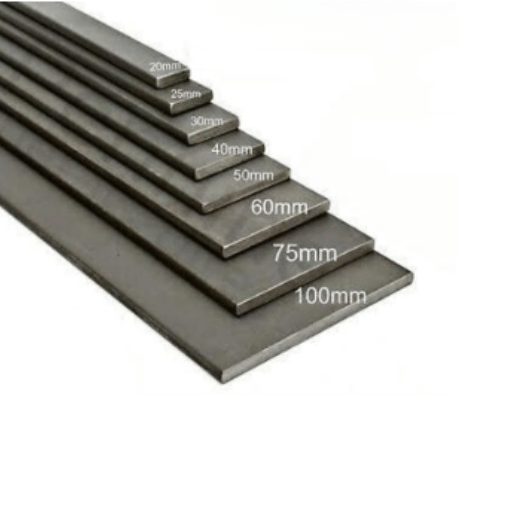
Steel flat bars come in various specifications to cater different application needs. The principal specifications are listed as follows:
1. Dimensions
Typical widths are 12mm-300mm, and the thickness is usually 3mm-50mm. Custom sizes may also be available according to project requirements.
2. Material Grades
- Mild Steel (MS): Presents a good combination of strength and malleability, thus becoming a choice for general-purpose applications.
- Carbon Steel: Introduces a greater level of hardness and strength, making it perfect for heavy-duty applications.
- Stainless Steel: Is the most corrosion-resistant material and is often found in places that are often exposed to moisture or chemicals.
3. Surface Finish
- Hot Rolled: It has a rougher texture and is commonly applied to structural parts where the surface looks good is not a priority.
- Cold Rolled: It has a smoother, polished finish, which makes it the best choice for precision applications and visual appeal.
4. Length Options
Commonly offered in standard lengths of 6 meters or 12 meters. Custom lengths can be cut according to requirements.
5. Tensile Strength
It depends on the material grade, but the tensile strength of steel flat bars normally varies from 400 MPa to 700 MPa.
Following these specifications, steel flat bars are produced to guarantee quality, dependability, and appropriateness for various industrial and construction applications.
Dimensions and Sizes of Mild Steel Flat Bars
Mild steel flat bars come in a wide range of dimensions and sizes and hence cover a large spectrum of application needs across industries. The widths of these bars usually go from 12mm to 300mm with a thickness that varies from 3mm to 25mm. The standard lengths are 6 meters and 12 meters, but there are often possibilities for custom sizes that can be made to fit the specific project requirements.
📈 Popular Sizes: The latest trends concerning search queries have shown that people often ask about the dimensions of flat mild steel bars that are used the most. The top sizes in this respect are, according to the report, 25mm x 5mm, 50mm x 10mm, and 75mm x 6mm, which can be considered as cheapest of the sizes thanks to their wide applications in construction, fabrication, and engineering. The very diversity in dimensions gives the opportunity to mild steel bars to perform widely from being used as structural support to forming frameworks and producing custom components.
Mild steel flat bars not only offer a variety of different sizes and lengths but also help make modern projects practical by providing long-lasting and high-performance materials. The right choice is a prerequisite for any application to get the best results.
Thickness and Width Options
Mild steel flat bars come with different thicknesses and widths that can make them suitable for a variety of applications. Thicknesses are usually around 3mm to 25mm, while widths can be anywhere from 20mm to 200mm or even more, thus giving the option of flexibility for small scale as well as big industrial projects.
💡 Selection Tips: The latest data from search engines shows users are most often looking for good thickness and width combinations for certain applications. In the case of structural frameworks, a thicker flat bar (like 12mm or more) is usually suggested to carry the load without any problem. At the same time, thin widths (less than 10mm) are often very much used for decorative or lighter fabrications. The choice of the right dimensions is based on the load that the project is going to require and on the durability that is going to be desired, therefore, it is very crucial to consult material specifications when making the decision for very precise decision-making.
Mechanical Properties of Steel Flat Bars
Steel flat bars have a variety of mechanical properties, which makes them very suitable for different applications in the areas of construction, manufacturing, and engineering. Here are the main points that illustrate their performance:
Tensile Strength
Flats of steel generally stand up to strong tensile strengths very well, thus being able to support high stresses without breaking. For instance, all flat bars made of mild steel are said to have tensile strengths somewhere between 400 MPa and 550 MPa, with the exact value dependent on the alloy’s composition.
Yield Strength
Yield strength is the one that characterizes the beginning of the material’s plastic deformation. Common flat bars made of steel which are applied in the construction industry have yield strengths in the range of about 240 to 350 MPa, thus proving their usability as support when the loads are being applied.
Ductility
Working with the ductility of steel flat bars means they can be transformed into different shapes without any risk of rupture, thus making them the right choice for artistic or form-intensive applications. Most of the flat bars are compliant with the ductility requirements set by the industry, and thus have sufficient malleability for the production process.
Hardness
Different degrees of hardness in steel flat bars have been measured in accordance with methods like the Brinell or Rockwell hardness scales, which are suitable for making wear-resistant parts. The harder steels are usually turned into tools; while the standard plates take part only in structural roles.
Corrosion Resistance
Untreated or uncoated steel bars display fair to excellent resistance to environmental conditions, such as moisture and chemicals, when undergo proper treatment or coating, and so their life span is ensured even under extreme conditions.
The traits mentioned above, when combined, make sure that the steel flat bars are not only versatile but also consistent in their performance, thus being the ideal choice in those projects where mechanical reliability, adaptability, and durability matters the most.
Choosing the Right Steel Flat Bar
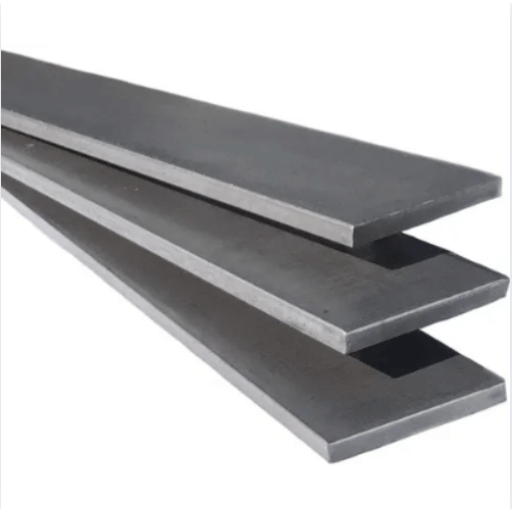
The selection of the right steel flat bar is influenced by several significant aspects:
1. Application Requirements
Think about the intended purpose—structural support, fabrication, or building in general. The flat bar’s dimensions, strength, and surface treatment should be in accordance with the project’s requirements.
2. Material Grade
Stainless steel and alloys are the leading materials in sweetness, strength, and resistance, among other things. For example, a low carbon steel grade is suitable for general-purpose applications but can be replaced with better alloys in heavy-duty situations.
3. Load and Stress
Determine the maximum load and stress to prevent the flat bar from getting distorted or broken. Use the tensile strength standards to help you pick the right one.
4. Dimensions
Check that the thickness and width of the flat bar are in accordance with the design specifications of the project for proper fitting and functioning.
5. Finish Requirements
To create a protective barrier against the elements, surface finish methods—like galvanization or other coatings—should be considered depending on the corrosive exposure of the environment.
⚠️ Expert Recommendation: Concentrating on these aspects will allow you to choose wisely depending on the dual factors of performance and cost. Engage an expert supplier or engineer for their professional opinion.
How to Select the Right Size and Thickness
Finding the right size and thickness represents a challenge to be solved by the interplay of functional needs, environmental conditions, and cost-efficiency. New data on the most popular searches shows that one of the main factors influencing users’ decisions is their need to know the load capacity and the durability of materials. Start by specifying the application, whether it is structural support, weight distribution, or environmental exposure. On the one hand, for heavy-duty projects, thicker materials will be your best bet load-wise, but on the other hand, they will obligate you to higher costs overall. Thinner options, however, may cut the cost but they might also become a reason for losing the material’s strength when being under high stress or in a harsh environment.
🔧 Best Practices:
- Take a look at industry standards and see if there is any compatibility issue, and make sure to follow the related regulations.
- The use of online calculators will be very helpful here. According to analytics, these sort of tools are one of the most demanded options that help to come up with the most suitable dimensions based on certain conditions like expected load and environmental factors.
- Getting the client’s input based on past experiences with similar projects can speed up this decision-making process and at the same time boost the confidence in the material choice.
With the help of AI-based tools along with trustworthy data sources, you can get the precise balance that will guarantee the practical performance of materials without going beyond your budget. It is very important though to keep the current industry standards as a reference and to work with professionals as a way of ensuring that your choices are right to avoid any problems at the implementation stage.
Understanding A36 Mild Steel Flat Bars
Among the most multifunctional and broadly utilized materials in the sectors of construction and manufacturing are A36 mild steel flat bars. They are known for their strength, versatility, and price, thus they are produced according to the ASTM (American Society for Testing and Materials) standards, which are specially by ASTM for structural purposes.
Key Properties of A36 Mild Steel Flat Bars
Composition
The carbon content is no more than 0.29% in A36 steel and it typically comprises manganese, phosphorus, sulfur, and silicon along with carbon. The material’s strength, toughness, and weldability are all well-balanced due to the low carbon content. This particular composition is what allows the material to be very strong but still able to undergo a lot of bending without breaking, which is very crucial in construction work.
Mechanical Properties
- Yield Strength: Minimum 36,000 psi (250 MPa)
- Tensile Strength: Between 58,000-80,000 psi (400-550 MPa)
- Elongation at Break (in 2 inches): About 20%
The mechanical properties of A36 make the material an excellent choice for structural frameworks that require not only durability but also a low amount of load-bearing capacity.
Workability
A36 flat bars are often one of the most preferred metals when it comes to fabrication due to their excellent workability that permits easy cutting, machining, and welding. It doesn’t matter whether you are doing large-scale structural parts or small custom components, its versatility will always support different manufacturing processes.
Corrosion Resistance
A36 steel does provide limited protection against rust in dry conditions but it is not a corrosion-resistant material. In case it gets exposed to a corrosive environment, applying surface treatments like painting, galvanizing, or powder coating can be the best option for prolonging the service life of the steel.
Common Uses
A36 mild steel flat bars have sought after in the trade of numerous industries such as:
- 1. Structural Supports – One of their main uses is to provide a framework for buildings, bridges, and industrial machinery.
- 2. Fabrication – These bars are used to make custom metal components for different purposes such as products or tools.
- 3. Automotive – They are used in the automobile sector as reinforcements and structural parts for vehicles.
- 4. Decorative Applications – Among the uses are handrails, brackets, and ornamental designs, which can be categorized as decorative applications.
Availability and Standards
A36 mild steel flat bars come in different dimensions starting from the width of ½ inch to more than 6 inches, and thicknesses that can meet both standard and custom requirements. The metal conforms to ASTM A36 standards, which guarantees its quality and performance are the same all the time.
💰 Value Proposition: If you think of A36 steel for your project, then its flexibility and low price will be the main considerations, particularly in cases where you need good structural support but want to keep the cost down. Working together with the suppliers of materials that provide certifications and quality assurance will make sure that you are getting products that comply with safety and design standards.
Common Mistakes When Purchasing Steel Flats
When it comes to buying steel flats, there are several common mistakes that can lead to inefficiencies, higher costs, or subpar results. Therefore, it is very important to know these mistakes and avoid them so you do not have unnecessary setbacks:
❌ 1. Neglecting Material Specifications
The failure to double-check the material specifications is one of the biggest mistakes buyers make. For example, one of the standards that steel flats must comply with is ASTM A36 which ensures the quality and performance of the steel. Misunderstanding with the suppliers over the grade or type of steel can lead to buying materials that do not fit the project specifications.
❌ 2. Overlooking Project Requirements
It is very important to have the perfect match between steel flats and the use case. Not taking into consideration the weight that the steel will be able to bear, the environment that it will be exposed to, and the overall size can cause problems of weak structure, more frequent maintenance, and replacements beforehand.
❌ 3. Failing to Prioritize Quality Assurance
Not carrying out quality assurance measures such as certifications or tests is a very costly mistake. Make sure that the supplier is giving you documentation that confirms that the product is in compliance with safety and design standards. Products that lack certifications might be unsafe and not durable either.
❌ 4. Underestimating Quantity Needs
If you miscalculate the quantity of steel flats you need, you might have to delay the project or you will be left with more inventory than planned which will affect your budget. It is better to rely on detailed project plans and suppliers with flexible delivery schedules who can adapt to changes quickly in this case.
❌ 5. Ignoring Supplier Credentials
Working with untrustworthy suppliers can lead to delays in the delivery of materials and also the quality might not be up to par. Always check a supplier’s history, read customer reviews, and look for industry certifications to develop a reliable partnership.
✅ Key Takeaway: Avoiding these mistakes will require planning and decision-making that are both proactive and informed. By applying data-driven insights and working with reliable suppliers, you are thus able to improve efficiency, lower costs, and secure the best outcome for your project.
Reference Sources
- Quality Steel Mills: Justifies the use of mild steel flat bars for providing an affordable and multi-purpose material in construction and fabrication.
- Union Steels: Discusses the characteristics and the leading areas of use of mild steel flat bars in construction, manufacturing, and metalworking.
- Wise Guy Reports: Examines the steel flat bar industry through the lens of automotive, construction, and energy sectors which are presumably the main consumers.
- Cognitive Market Research: Investigates the key drivers of the steel flat bar market including the growth areas of infrastructure and industrial manufacturing.
- Central City Steel: Gives tips on the purchasing and selling of surplus metal, among which is mild steel flat bars.
Frequently Asked Questions (FAQs)
Q
What is a mild steel flat bar?
A mild steel flat bar is a rectangular steel alloy that is very popular and common in construction, manufacturing, and metal work because of its strong point, ductility, and low cost.
Q
What are the common applications of mild steel flat bars?
They find their usage in construction (like structural supports), the automotive industry, machinery, metal works, and even DIY projects.
Q
What are the main qualities of mild steel flat bars?
They are among the highest and strongest materials, with excellent weldability, ductility, and being very economical in terms of costs.
Q
What are the sizes available for mild steel flat bars?
They are presented in a variety of widths, thicknesses, and lengths, which can usually be customized according to the needs of the project.
Q
How are mild steel flat bars produced?
They are usually made either through hot rolling or cold rolling depending on the specifications set out.



